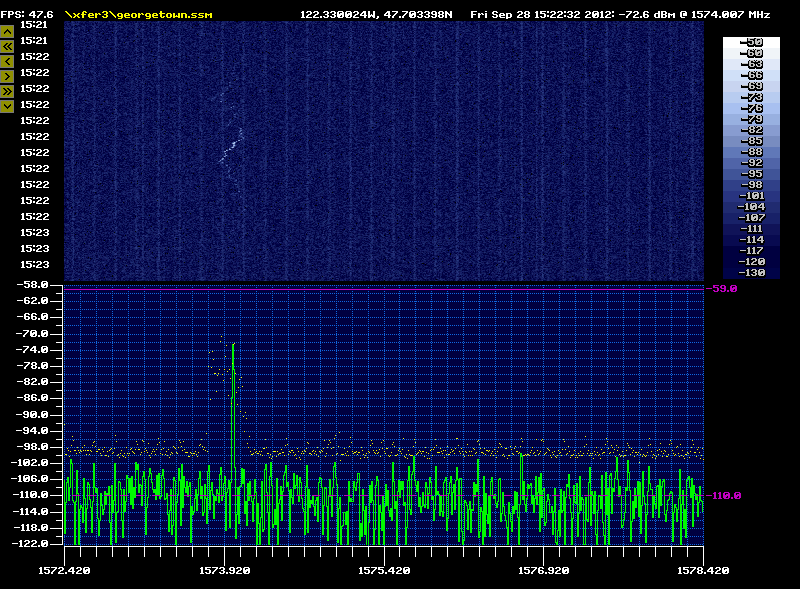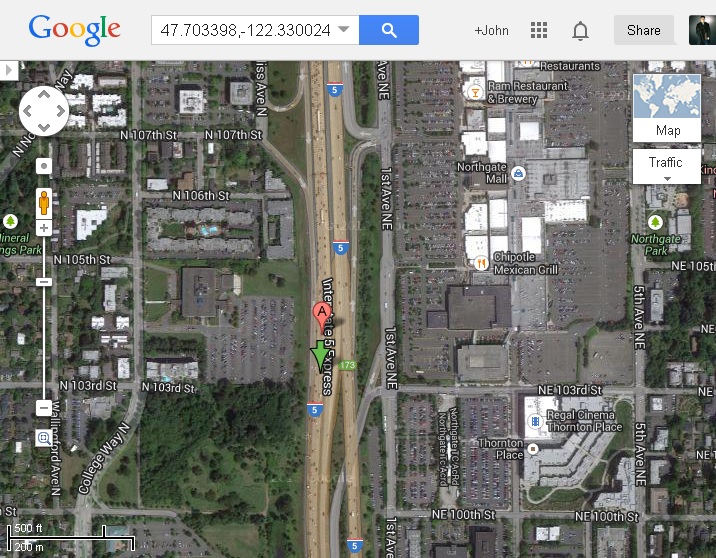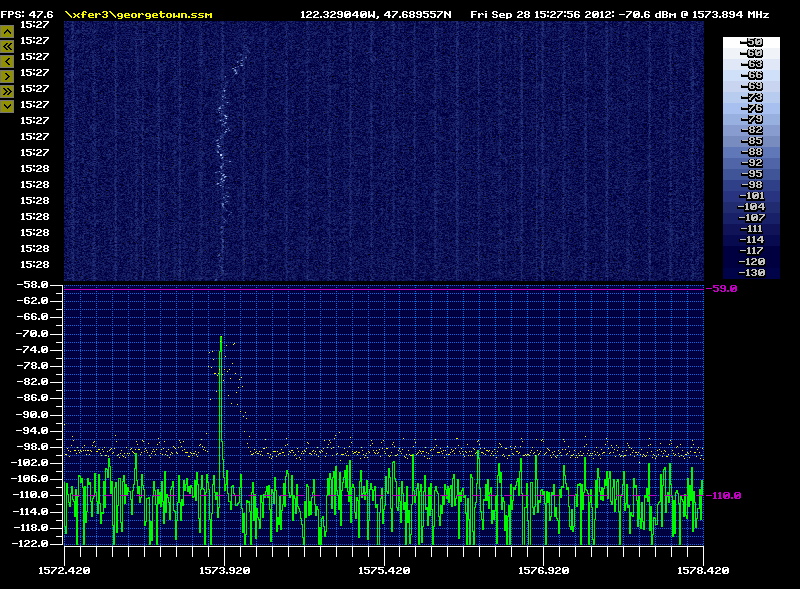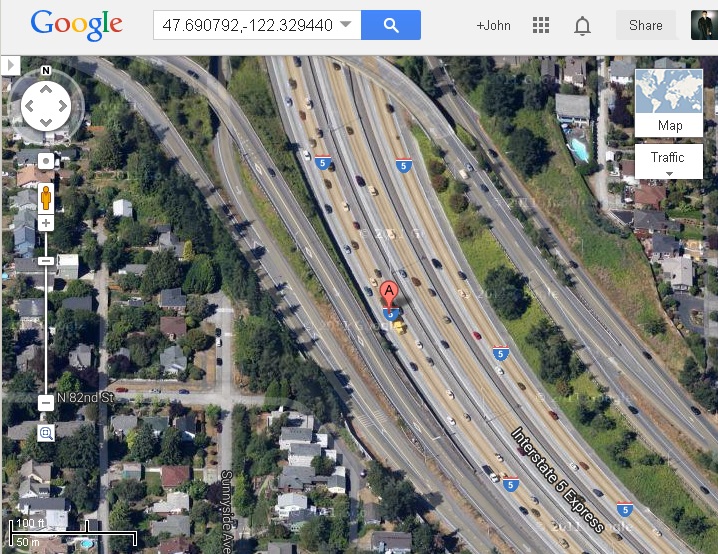Below are some recordings of strong terrestrial signals near the GPS L1 center frequency of 1575.42 MHz. These signals were captured at various locations around the Seattle, Washington area
with a Trimble patch antenna mounted on the trunk of my car. The antenna was connected to a portable spectrum analyzer (Signal Hound SA44), whose trace data was
continuously recorded by a laptop PC running my freeware SSM spectrum surveillance program.
SSM is a good match for this application because it can record a continuous stream of spectrum analyzer traces, potentially for hours or days at a time. The recorded traces are rendered in in a waterfall display that makes it easy to spot weak signals that might otherwise be overlooked when viewed one sweep at a time. Each trace is tagged with the time when it was recorded, as well as with the car's current GPS location, transmitted to the laptop via a USB-connected u-blox LEA-6H receiver module.
Under normal circumstances, no signals should ever appear on a spectrum analyzer tuned to the GPS band. GPS uses spread spectrum modulation based on pseudorandom sequences that leave little or no coherent energy for a frequency-domain instrument to observe. Furthermore, signals received on Earth from GPS satellites arrive at an almost unimaginably faint level, roughly equivalent to the light from a 40-watt bulb as it would appear on the opposite coast of the United States. On the regulatory side, international telecommunications treaties reserve the applicable region of the RF spectrum exclusively for space-to-ground communications. As a result, any signals we can pick up in this band are likely to originate from nearby terrestrial sources. While unintentional radiators have been encountered in the past, we can expect the majority of visible signals in the GPS band to emanate from commercial jammers used illegally by individuals such as commercial truckers who are attempting to defeat GPS tracking equipment on their employers' vehicles.
Such jamming devices rely on brute-force RF emissions, often unmodulated, to overcome the extremely weak signals received from GPS satellites. These unlicensed signals can pose a threat to all nearby GPS applications, from personal smartphones to precision scientific instruments to safety-critical operations. (To u-blox's credit, my LEA-6H GPS module remained unaffected by the interfering signals captured by the Signal Hound.)
An excellent discussion can be found in the paper Signal Characteristics of Civil GPS Jammers by Mitch, Dougherty et al. from the ION GNSS 2011 conference. While their paper looks at some specific jammer models in a laboratory setting, my goal was to gain insight into the extent of jammer usage in the real world, by looking for signals from units in the hands of their intended "customers."
Some ideas for future work:
SSM recording files for entries below:
September 28, 2012: Southbound travel through Seattle on Interstate 5 between Lake Forest Park and Georgetown (65 MB)
September 28, 2012, 3:22 PM local time: Southbound travel though Seattle on Interstate 5 between Lake Forest Park and Georgetown


September 28, 2012, 3:27 PM local time: Southbound travel though Seattle on Interstate 5 between Lake Forest Park and Georgetown

